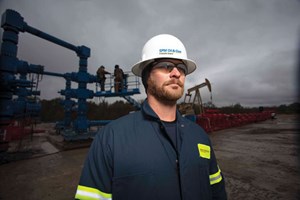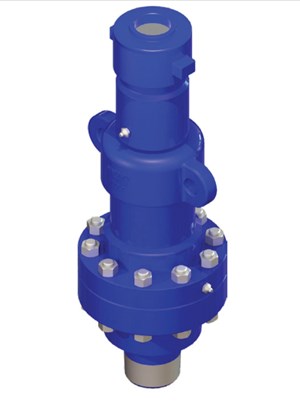Maximizing recovery: Leveraging artificial lift to recover more production from existing wells
Artificial lift technologies are incredibly valuable for operators seeking to maximize recovery from their existing assets. As wells become deeper, longer and more complex, operators have found new ways to increase production and long-term recovery. While many of these wells yield high initial production rates, they also tend to experience steeper production declines much sooner than conventional wells and require artificial lift earlier in their life cycles. Optimizing total cost of ownership of today’s wells requires innovative artificial lift methods, designed to dramatically increase recovery while meeting operator challenges.
OPTIMIZED WELL LIFESPANS AND PRODUCTION

In today’s oil field, it is essential for operators and oilfield service companies to optimize recovery from existing wells. At least 90% of the world’s oil and gas wells depend on some form of artificial lift to realize their full potential. Even the most robust wells can lose pressure over time, requiring artificial lift technologies so that companies can produce higher flowrates and meet production targets, Fig. 1. With the pressures of creating cleaner energy and operating wells under increasingly challenging environments, artificial lift technologies are a crucial component of meeting environmental and technical performance targets.
ROD LIFT BENEFITS
A rod lift system is one of the most common types of artificial lift technology. It employs a sucker rod string and downhole pump to pressurize the reservoir. This enables more oil and gas to be drawn to the surface, making it ideal for wells that are no longer strong enough to push the reserves on their own. The dependability and cost-effectiveness of rod lift systems make them a popular choice among operators, as roughly 75% of wells utilizing artificial lift technologies employ this type of solution.
In addition to offering companies reliability and affordability, rod lift systems are typically easy to install and operate. With the workforce challenges that face today’s operators and oilfield service companies, this is especially beneficial.
EXTREME CONDITIONS
Current advancements in drilling and stimulation technologies demand advanced artificial lift technologies. For wells in corrosive, abrasive, high-pressure/high-temperature (HPHT) environments, it is even more crucial.
In conventional environments, rod lift systems use a stuffing box to form a tight seal against the polish rod. This creates a barrier between the well and surface while directing produced fluid into the flowline, inhibiting leaks of undesired fluids and gas. Extreme well conditions, however, require more than a conventional stuffing box can deliver.

The pollution-control, high-pressure SPM Oil & Gas stuffing box is engineered specifically for harsh conditions, Fig. 2. The innovative design helps reduce pollution while extending service life and expanding operating ranges. It increases internal sealing support by more than 60% and increases the life of the polish rod by employing rugged packing material.
The extended-life stuffing box features a pollution-control flapper valve that shuts off the well in the event of a polish rod break. This important safety feature not only prevents equipment damage, but also reduces environmental contamination risks. Upgraded brass internal leveling plates optimize polish rod alignments, test ports and grease zerks to simplify well maintenance. Additionally, the stuffing box is rated for wells from 1,500 to 5,000 psi, temperatures up to 350° F (177° C) and high hydrogen sulfide gas conditions, thus increasing safety and reliability, even in the harshest environments. These specifications also help prevent premature equipment failures and expensive replacements.
In internal testing, the SPM Oil & Gas stuffing box extended well life by more than four months, compared to conventional artificial lift solutions. These advancements not only help reduce pumping equipment maintenance but also nonproductive time and deferred production, positively impacting a company’s bottom line.
THE FUTURE OF ARTIFICIAL LIFT
Operators and oilfield service companies are challenged, more than ever, to discover new ways to improve economic and environmental performance of existing wells. Faced with increasingly harsh operating environments and cost pressures, companies require cost-effective solutions to capture more reserves—even as wells become increasingly complex.
Artificial lift technologies engineered for demanding environments can uniquely meet these objectives and provide companies a competitive advantage in the field. In today’s oil field, advanced artificial lift technologies are very valuable and can significantly impact a well’s economic viability. The SPM Oil & Gas pollution-control, high-pressure stuffing box demonstrates how impactful new artificial lift technologies, designed for today’s operational realities, can be.
- Advancing offshore decarbonization through electrification of FPSOs (March 2024)
- U.S. oil and natural gas production hits record highs (February 2024)
- What's new in production (October 2023)
- FPSO technology: Accelerating FPSO performance evolution (September 2023)
- What's new in production (August 2023)
- A step-change in chemical injection (August 2023)
- Applying ultra-deep LWD resistivity technology successfully in a SAGD operation (May 2019)
- Adoption of wireless intelligent completions advances (May 2019)
- Majors double down as takeaway crunch eases (April 2019)
- What’s new in well logging and formation evaluation (April 2019)
- Qualification of a 20,000-psi subsea BOP: A collaborative approach (February 2019)
- ConocoPhillips’ Greg Leveille sees rapid trajectory of technical advancement continuing (February 2019)


